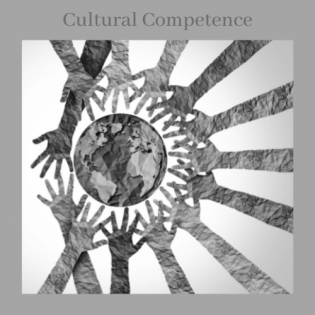Representation
One of the keys to unlocking cultural competence is reading diverse books with characters and locations that represent a variety of cultures. In this activity, young people define and discuss the value of representation. They do an audit of a book collection to identify representation and gaps. As a goal, they seek to fill gaps in representation by adding books to the collection.
define representation and give an example
- access to a book collection
- bookshelf BINGO printout
If you have the time, you can create a simplified bookshelf bingo card using this website (https://www.buzzbuzzbingo.com/customize/74576). This might be helpful if you are working with younger children.
representation: depiction of culturally diverse demographics in our environment; the diversity of cultures is proportionally reflected in media and content
In what ways does our school/organization do representation well? Where can we improve?
- All Are Welcome by Alexandra Penfold
- All Are Welcome literature guide
- Bookshelf Bingo, by Kathryn Fishman-Weaver https://www.edutopia.org/sites/default/files/2019-12/BookshelfBingo.pdf
- Equity in Your Library simple safe service guide https://www.learningtogive.org/resources/equity-your-library
Instructions
Anticipatory Set:
Show a book cover (such as All Are Welcome). Ask young people if they can identify anyone who looks like them on the cover. Talk about what attribute of themselves they see represented. Some kids may relate to wearing glasses, others may see race or ability. Notice how many students don't see themselves represented. If there are students who don't see someone like them on the cover, ask what is missing. Ask how that feels.
Read the book All Are Welcome. Pause every couple of pages to ask what characteristics they see represented in the pages.
Point out that All Are Welcome shows an exceptionally diverse classroom. Ask the young people if other books they have read show so many types of people. Discuss: Why is it important for people to see themselves represented in books?
As a group, "audit" a book collection (a library, a classroom, etc) for representation of different attributes, using Bookshelf Bingo (see Bibliography).
Note: If the group is remote, or if there is no book collection available to the whole group, this can also be a great opportunity for each learner to analyze their own personal book collection to check off boxes for the group.
After young people have analyzed the representation in the library, look at the diversity of representation together. Discuss whether it represents all cultures and people. Discuss why diverse representation is important. You may relate back to the key metaphor and talk about the role of diverse books in unlocking understanding of different cultures.
Take notice of squares that weren’t checked. Make a goal as a group to find books that fit these categories.
Giving back to the community: Create a poster, bulletin board, mural, or other type of display that communicates the message, “all are welcome here.”
Philanthropy Framework
-
Strand PHIL.II Philanthropy and Civil Society
-
Standard PCS 02. Diverse Cultures
-
Benchmark MS.2 Describe the importance of hearing all voices in a community and respecting their right to be heard.
-
Benchmark E.2 Discuss the importance of respect for others.
-
-
-
Strand PHIL.IV Volunteering and Service
-
Standard VS 01. Needs Assessment
-
Benchmark E.1 Identify a need in the school, local community, state, nation, or world.
-
Benchmark MS.1 Identify a need in the school, local community, state, nation, or world.
-
-
